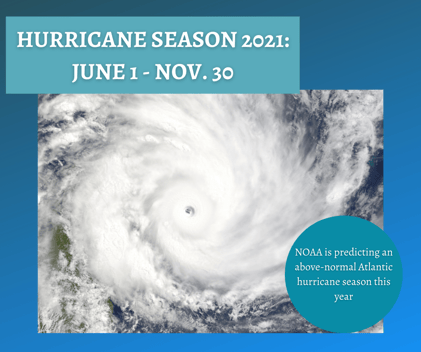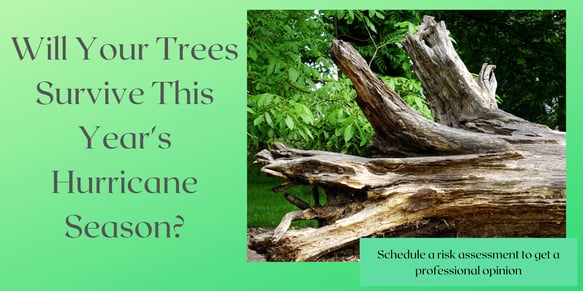There are few things worse than having a towering tree come crashing down on your property. Not only would you lose a treasured tree, but you'd also have to deal with cleanup and repairs.
The bad news: The National Oceanic and Atmospheric Administration has predicted an above-normal Atlantic hurricane season (they predicted the same thing in 2020, and it ended up being the most active and fifth costliest hurricane season to date). And with the high winds and heavy rains those storms may bring, some trees could reach their breaking point.
The good news: There are steps you can take to make your trees more hurricane resistant.
Oversaturated Soil + A Compromised Root System = TIMBER!
This year's Atlantic hurricane season began on June 1 and will run until Nov. 30.
Fortunately, most healthy trees can handle short periods of high winds and heavy rain from thunderstorms, besides maybe a few snapped branches. Their saving grace? A strong, expansive root system.
When a tree is uprooted in a storm, it's most commonly because of a combination of two factors: soggy soil and a weak root system.
Trees needed to be planted at the proper depth and in soil that has good drainage. They also need enough space to develop a healthy root system.
Your tree may be at risk of falling over during a storm if... 
- The soil around it is often mushy - either because of a lot of rain or overwatering.
- The tree was planted in shallow or gravel-like soil.
- The roots are restricted or cut by things like roads, sidewalks, driveways, and building foundations.
- The tree is diseased or infested with insects.
Trees with multiple trunks or U- or V-shaped splits in their trunks are also at a higher risk of falling. The places where the trunk splits are weak points and are more likely to break apart during storms.
So, we've talked about an entire tree falling over. What about falling tree limbs? Well, incorrect pruning and disease can both lead to limbs tumbling down during a storm.
Strong tree limbs are those that aren't crowded by other limbs and grow out of the trunk at a 90-degree angle, or close to it.
The species of your tree also plays a part in how hurricane-resistant it is. Because of naturally weak limb and root structures, some tree species just won't do well, bless their hearts. Those species include silver maples, Bradford pears, and weeping willows.
What to Do About At-Risk Trees
It's time to talk solutions. If you have doubts about your tree, schedule a risk assessment so that a certified arborist can help you determine your next steps.

You'll typically have three options:
- Schedule a tree service to strengthen your tree. That could mean trimming and pruning to keep the canopy balanced, cabling and bracing to support structural weaknesses, or applying plant health care treatments to mitigate bug infestations or disease.
- Get rid of that risky tree. It may not be worth it to save the tree if the risk it poses to your property is too great. You know what they say: It's better to be safe than sorry. A tree removal may be your best bet.
- Let the tree fall on its own. A tree falling doesn't have to be a disaster. As long as it falls away from anything important, you could just let it happen and get it hauled away later, if necessary.
Even if you do all you can to make your tree as hurricane resistant as possible, nothing is foolproof. Trees could still topple, and limbs could still fall. Good thing you know of a tree company that offers 24-hour emergency tree services (wink, wink). We can even help you with your insurance claim!
Learn more about our 24-hour emergency tree removal services.







